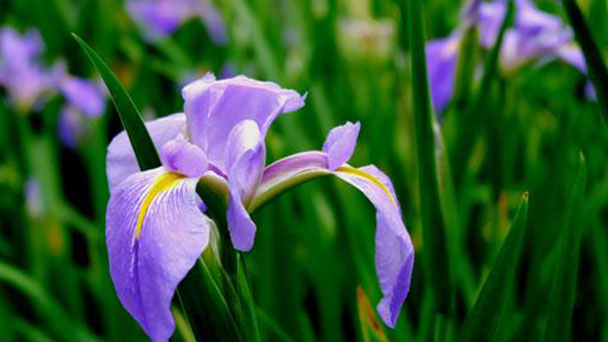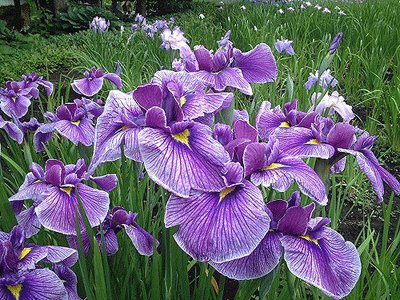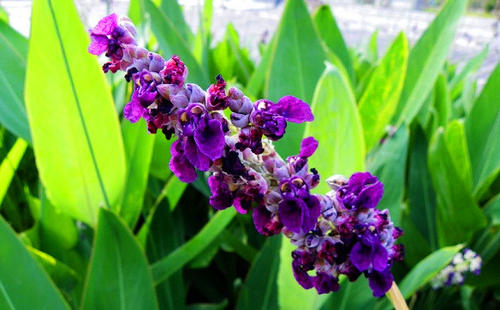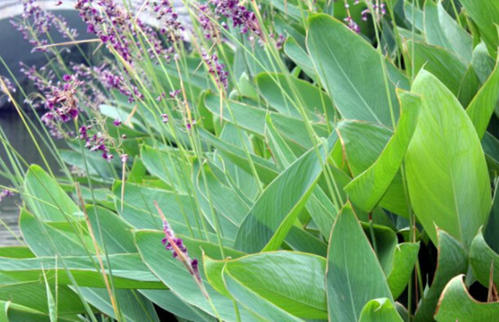How to care for Japanese water iris
Written by Maggie
Dec 18 2020

When you are looking for an easy-care flower that loves wet conditions, then the Japanese water iris (Iris ensata) is just what the doctor ordered. This flowering perennial is available in a range of colors, including purples, blues and whites, with attractive medium green foliage. Care of Japanese iris is moderately simple when the plant is located properly. Learning how to care for Japanese water irises is also an important part of their performance.

How to care for Japanese water irises
1. Soil for Japanese water irises
Japanese water iris should be cultivated in sandy loam with good ventilation and permeability. If the soil in the cultivated land is relatively sticky, it can be mixed with organic fertilizer, straw or sand for improvement before cultivation. japanese water iris requires the soil pH to be between 6 and 7. Soil pH below 5 causes fluoride toxicity. To increase the pH of the soil, lime (mixed well with the soil) should be added to the soil one month before breeding. A pH value higher than 7.5 causes deficiency, which can be prevented by increasing the use of organic fertilizer in the soil.
2. Temperature for Japanese water irises
In two weeks after Japanese water iris cultivation, the night temperature should be maintained at 12~C, 22℃ in the day, 13-14℃ after budding and 23-25℃ in the day. The period from the 3rd leaf to the 6th and 7th leaves is the bud differentiation period of Tang Changpu. If the temperature is too low (less than 10℃) during this period, blind flowers will be caused to grow slowly and the flowering rate will be reduced. If the temperature is higher than 27℃, bud elimination will occur, growth will be blocked and petals are vulnerable to burns.
3. Watering for Japanese water irises
The soil should be watered once before breeding to ensure that the soil is moist during breeding. No watering is required within two weeks after breeding. Throughout the growth of Japanese water Iris, the soil is kept moist, optionally watered on a sunny morning if the soil is dry, and sometimes the mulch is needed to keep the soil moist. Southern spring is rainy, control watering leaves appropriately to promote root growth. Water supply should be sufficient, otherwise it will affect flower bud formation. During the period of budding, storage and flowering, the most water is needed. Water should be poured once a day or every other day. In case of hot and high temperature, spray humidification should be timely to reduce the temperature. Pay attention to drainage after rain, and stop watering in October.
4. Sunshine for control Japanese water iris
Japanese water iris is intolerant of shade, is a flower that likes light and long sunshine. Especially in the process of growth, it needs strong sunlight, especially after the leaves sprout, the whole plant makes food through photosynthesis to maintain growth. The varieties of cut flowers are greatly influenced by the light. They grow and thrive in sufficient sunshine, have strong resistance, and their colors are gorgeous and lasting. But in hot summer, avoid direct sunlight. Lack of sunlight in 3-7 leaves (flower bud differentiation stage) will lead to insufficient nourishment produced by leaf assimilation, which will affect the flowering. Therefore, sunshine should be increased as much as possible from the appearance of the third leaf to the flowering stage.
5. Fertilization for Japanese water iris
In the first few weeks after Japanese water Iris cultivation, the pellets themselves provide enough nutrients to enable the whole plant to grow well, and the roots of the new cultured corms are very sensitive to salt, so fertilization normally begins a few weeks after cultivation (3-4 weeks). When the third leaf is extracted, 12-18kg of granular calcium nitrate is applied per acre. It can be divided into three catch-ups. In the seedling stage, topdressing should be carried out, especially phosphate potash fertilizer, which can not only improve the quality of cut flowers and bulbs, but also increase the disease-resistance and lodging resistance of the whole plant. Topdressing is generally carried out in the seedling stage, the vigorous growth stage, before and after flowering and during pellet cultivation. Topdressing should not be too much, basin soil is too fat, leaves easy to grow, fertilization with a small number of times for the principle. In the whole growing period, three times of thin liquid fertilizer should be applied before flowers, and the first time after the second leaf is expanded. The second time was applied in the gestational stage (after the 4th leaf was extracted); Apply the third time after the flower ears are drawn. After flowering, 1-2 times of rarefied liquid fertilizer should be applied to promote new ball development. Lack of fertilizer is manifested as thin leaves, yellow and white spots in the leaf sheath, so fill it in time.
6. Ventilation for Japanese water iris
In the process of ventilation, special attention should be paid to the fluctuation range of greenhouse temperature and relative humidity should not be too drastic

Caring for Japanese water iris diseases and insect pests
The common diseases of Japanese water iris include bulb rot, leaf blight, etc.Common pests include thrips, slugs, etc.
1. Bulb rot is a disease that often occurs during storage. After catching this disease, the surface of the bulb can appear the disease spot with a little pitting of yellowish brown, appear all round black ulcer shape, meet air mouth cold big, disease spot expands rapidly, long qu appears the mildew layer of cyan green, bring about atrophy of the bulb dry and hard. The precaution is to dig the bulb carefully to avoid bulb trauma. After harvesting the bulbs, it is best to soak them in cold water first, then disinfect them with alcohol and store them in the dark, and make the storage room ventilated and dry, and keep the low temperature of 4-5℃.
2.. Leaf blight usually starts from the tip of the lower part of Japanese water iris, with green yellow spot fading at the beginning, dark brown mildew layer appearing in the later stage of disease spot drying, and the onset is more serious from July to September. The preventive measure is to strip the dried bulb scales before planting and soak the bulb with 0.5% potassium permanganate for 15 minutes for disinfection treatment. Or at the early stage of plant disease, 1% bordeaux mixture or 50% Zinc substitute 1000x solution was used for prevention and treatment, and sprayed once every 8-10 days.
3. Thrips, the adults and nymphs of this pest, usually hide in the axils of the Japanese water iris leaves during the day to harm the plants, and creep up the leaves in cloudy days or at night to harm the leaves. The leaves, stems and flowers of the main feeding plants discolor the leaves, leaving grayish white punctum and oviposition marks on the corolla, causing the petals to curl. The 2.5% deltamethrin emulsion can be sprayed 400 times for prevention and treatment.
4. Slugs, commonly known as slugs, are a widespread and versatile pest. Adults and nymphs nibble the buds, leaves of Japanese water iris, climb and often leave silver-white trails. We can use 3% lime water or 100 times liquid ammonia water spray prevention.

Latest Updated
- Benefits of Bugleweed - 7 Science-backed Health Benefits
- Bugleweed Dangers & Side Effects - Is It Poisonous?
- How to Plant Evergreen Trees - What You Should Know
- When to Plant Evergreens - Grow Guide for Evergreen Trees
- 12 Wonderful Evergreen Shrubs for Your Garden
- 12 Popular Evergreen Plants with Pictures for Beginners
- When And How To Prune A Lilac Bush Like a Pro
- How to Grow & Care for Lilac Vine (Hardenbergia Violacea)
- Japanese Lilac Tree (Syringa Reticulata) Care & Propagation Guide
- Shumard Oak Pros and Cons - What to Know
Popular Articles
- Winter maintenance of Antirrhinum Majus
- How to Grow Terminalia Mantaly Tree
- How to Grow and Care for Crossostephium Chinense
- How to grow Antirrhinum Majus in spring
- Peristeria Elata (Dove Orchid) Profile: Info & Care Guide
- Underwatered Snake Plant (Sansevieria Trifasciata) - Signs And How To Fix
- How to Care for Brazilian Jasmine Plant (Mandevilla Sanderi)
- How to Grow & Care for Graptopetalum Purple Delight in Summer
- Rosa Chinensis (China Rose): Plant Growing & Care Tips
- How to Care for Baby Sun Rose (Aptenia Cordifolia)